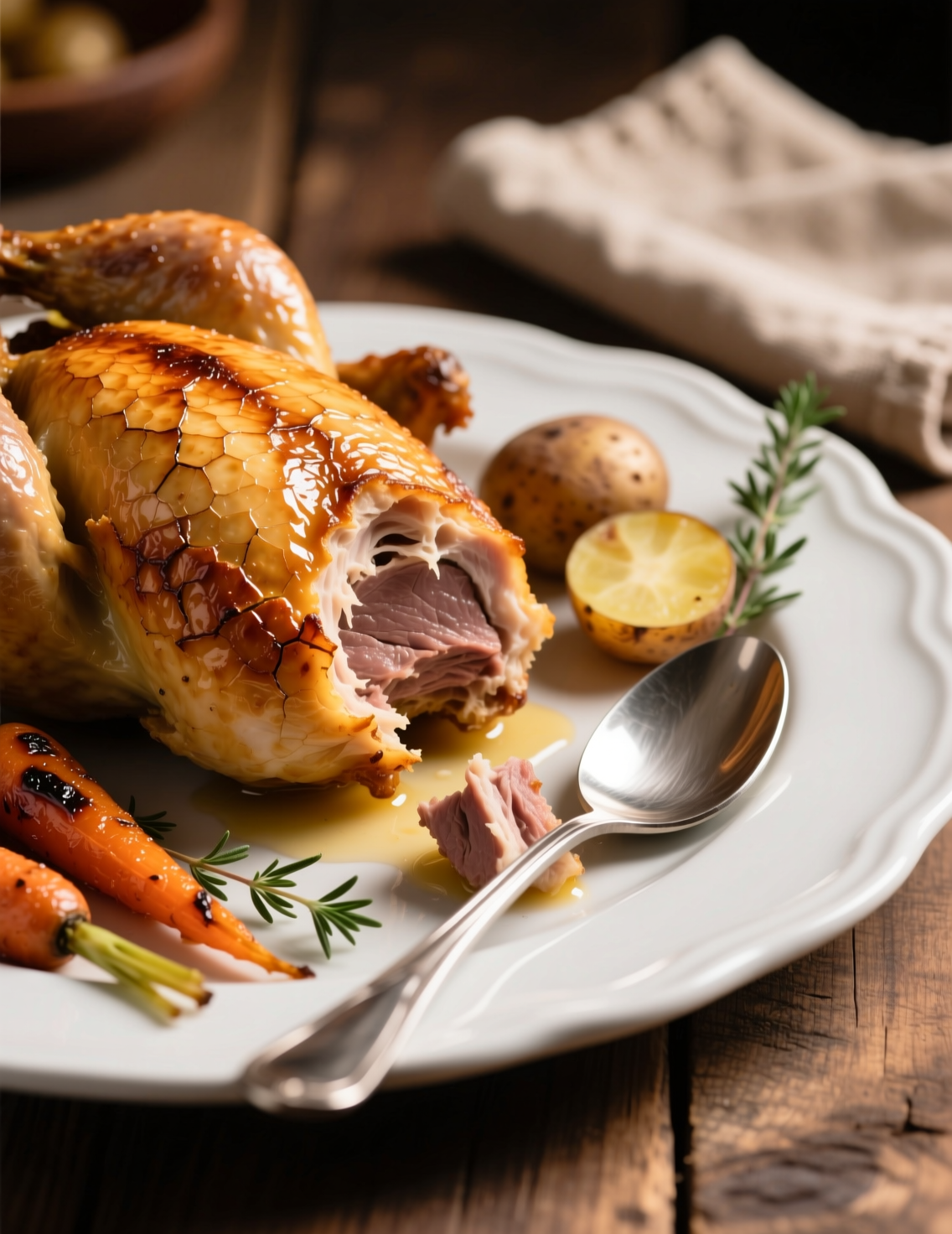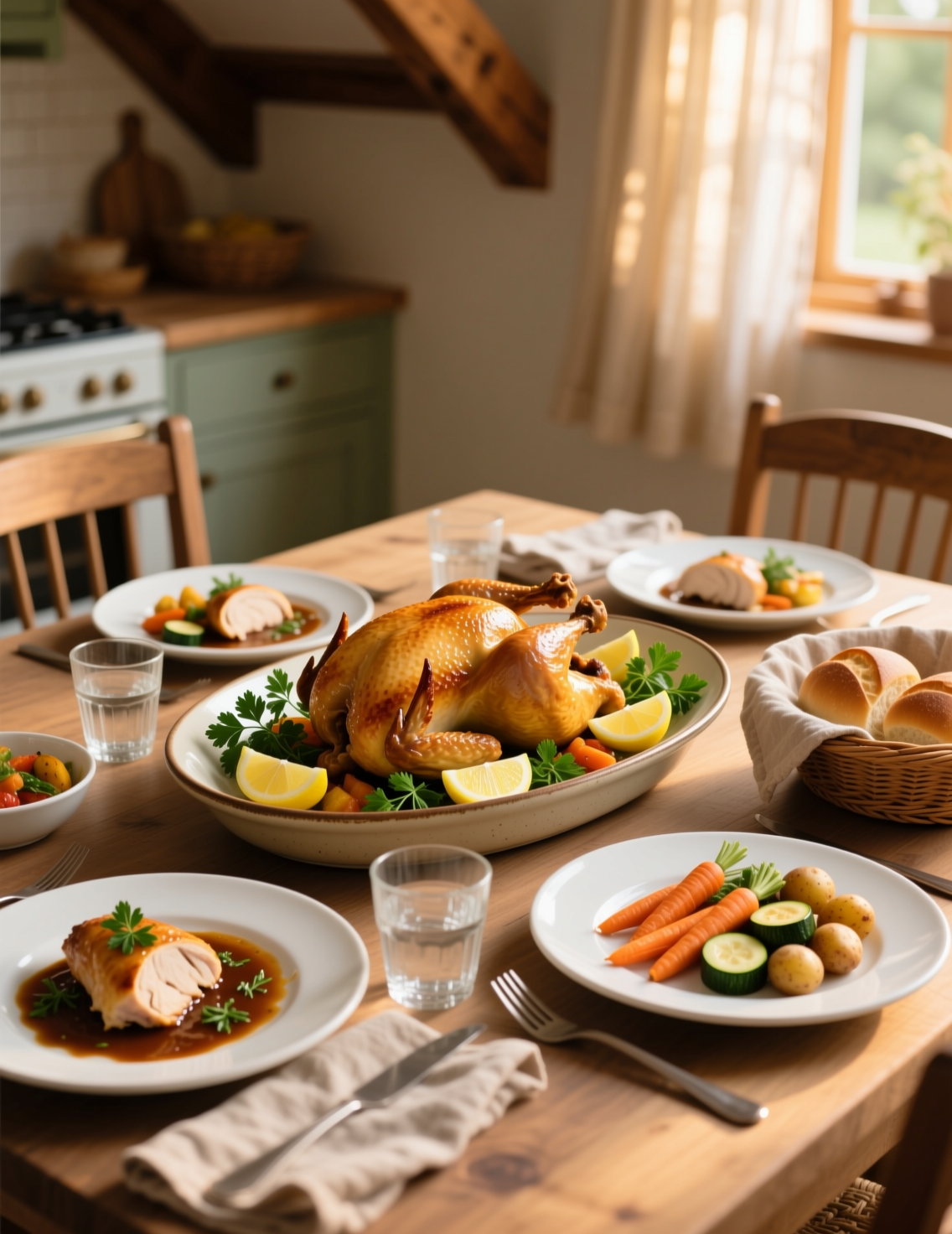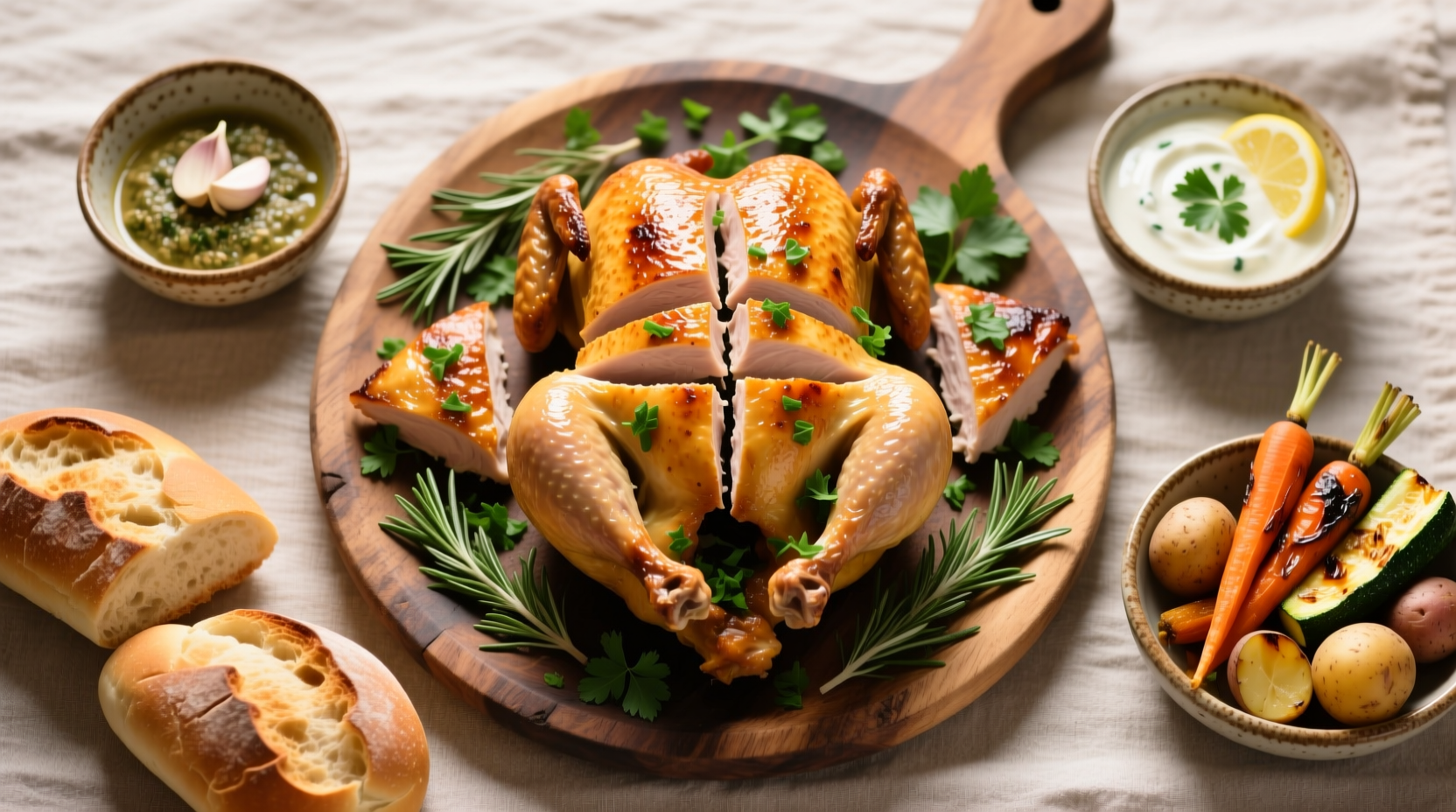The smell of rotisserie chicken wafting through a kitchen is something that seems to instantly anchor a home. People line up at grocery stores for it, restaurants guard their seasoning blends like treasure, and chefs quietly admire the technique even when they pretend not to. Today, I’m breaking down a quick and easy rotisserie chicken recipe for 4 servings that doesn’t sacrifice flavor for speed. You’ll learn not just the how, but the why, which makes all the difference when cooking like a professional.
Why Rotisserie Chicken Still Matters
Rotisserie chicken isn’t new. It dates back to medieval Europe where whole birds slowly rotated over open flames. Fast forward, and you’ll find that in the U.S. alone, over 900 million rotisserie chickens are sold yearly (National Chicken Council, 2023). That’s not just a number; it’s a culinary movement that has shaped home kitchens and takeout counters alike.
The secret to its popularity isn’t only convenience. It’s that unique combination of tender meat and perfectly crisp skin, a texture contrast chefs chase across cuisines. Professional kitchens spend hours with brines, marinades, and precise roasting temperatures. But when time isn’t your luxury, the trick is simplifying the method without dulling the result.
Core Idea Behind This Recipe
The goal here is professional-level rotisserie chicken at home, in under 90 minutes. That’s the sweet spot: long enough for skin to crisp and juices to lock in, but short enough for a weeknight dinner. Instead of a spit, you’ll rely on oven roasting and a clever use of seasoning balance.
Ingredients Breakdown (For 4 Servings)
- 1 whole chicken, 3–4 pounds
- 2 tbsp olive oil (or melted butter, if you want a richer skin)
- 1 tbsp kosher salt
- 1 ½ tsp freshly ground black pepper
- 2 tsp smoked paprika
- 1 tsp garlic powder
- 1 tsp onion powder
- ½ tsp dried thyme
- ½ tsp dried rosemary, lightly crushed
- 1 lemon, halved
- 4 garlic cloves, smashed
- Fresh herbs (optional: parsley or thyme sprigs)
Notice the seasoning mix. It’s not random. Paprika provides color and depth, while onion and garlic powder build an aromatic backbone. Rosemary and thyme create that “Sunday roast” vibe without overpowering. Salt? It’s not just for flavor—it helps draw moisture from the skin so it crisps better.

Step-by-Step Cooking Method
Prepping the Bird
First, pat the chicken dry. Every professional chef will tell you: moisture on the skin is the enemy of crispness. Even five extra minutes spent blotting with paper towels makes the final difference. Don’t skip it.
Rub olive oil all over, making sure to reach under wings and legs. Oil acts as both a flavor carrier and a heat conductor. The fat bonds spices to the skin so they don’t just fall off.
Sprinkle the spice mix generously. You want it to cling, almost like a dry rub. Inside the cavity, place garlic cloves, lemon halves, and any leftover herb stems. This isn’t just for show. Steam from the lemon keeps the breast moist while the garlic infuses subtle depth.
Trussing (Yes, It Matters)
Now, a lot of home cooks skip trussing, but it changes how evenly the bird cooks. Tie the legs together with kitchen twine, tuck wings under the body. This compact shape reduces surface area so the breast doesn’t dry before the legs finish. Professionals obsess over this tiny detail.
Oven Setup
Preheat oven to 425°F (220°C). A higher starting temperature crisps the skin quickly. After 20 minutes, reduce to 375°F (190°C) and let the chicken finish roasting for another 40–50 minutes.
Here’s the rule: cook until the thickest part of the thigh reads 165°F (74°C) on a thermometer. Anything less is unsafe; anything more risks dry meat. Chefs live by thermometers, not guesswork.
Resting the Chicken
Don’t carve right away. Rest it for at least 10–15 minutes, tented with foil. Why? Because juices redistribute. Cut too soon, and all that flavorful liquid ends up on the cutting board instead of in your bite.
Common Misconceptions
One myth is that brining is essential every single time. Yes, brining works wonders, especially for lean birds. But for a weekday recipe, seasoning properly and managing oven temperature yields equally moist results.
Another misconception is that rotisserie flavor only comes from spit rotation. Rotation helps self-baste, sure, but oven roasting with good seasoning replicates 90% of the experience. The missing 10%? It’s nostalgia.
Professional Insights
Chefs know that chicken skin crispness comes down to rendering fat slowly while keeping heat high enough. Think of it like searing a steak, but across a larger surface. That’s why the initial blast of 425°F sets the skin.
Another trick: basting halfway with pan juices. Tilt the pan, spoon over the bird. The juices, now infused with seasoning and fat, add a lacquer-like sheen to the skin. Some chefs skip this for speed, but the flavor payoff is undeniable.
Flavor Variations
Cooking the same spice blend every time gets boring. Here are professional tweaks:
- Mediterranean: Add oregano, sumac, and a splash of olive oil with lemon zest.
- Asian-Inspired: Soy sauce, ginger, five-spice, and a touch of honey for caramelization.
- Latin Style: Cumin, chili powder, lime zest, and cilantro stems inside the cavity.
Each variation maintains the same method, but the profile shifts dramatically. That’s the art part of cooking.
Pairings and Sides
A chicken like this shines with simplicity. Roasted potatoes underneath the rack catch drippings and turn golden. Steamed green beans or a crisp fennel salad cut through the richness.
Wine? A Chardonnay with light oak handles the fat, or a dry Riesling if you’re leaning toward spice-heavy seasoning. In professional settings, pairings elevate simple dishes into restaurant-worthy meals.
Food Safety and Storage
Professionals never gamble with poultry. Always sanitize cutting boards after prepping raw chicken. Use separate knives when possible. Store leftovers within 2 hours.
Leftovers keep 3–4 days refrigerated, or 2–3 months frozen. Pro tip: shred leftover meat for sandwiches, tacos, or soup. Bones make a superior stock. In fine kitchens, waste is seen as lost flavor, not just lost money.

Trends and Industry Insights
Interestingly, rotisserie chicken sales spike during holiday seasons. People crave festive comfort but lack time. Restaurants and supermarkets capitalize by pushing ready-made options.
There’s also a health trend—air fryers replicating rotisserie texture with less fat. Though air fryers don’t give the same depth, they’re gaining ground in home kitchens. Professionals may scoff, but home cooks love convenience.
A Real-World Anecdote
I once cooked rotisserie chicken for a group of culinary students, rushing against time before a practical exam. No spit, just a battered oven and a tray that wobbled. The skin came out golden, juices pooled at the bottom, and one student whispered, “This tastes like store-bought but better.” That’s when it hit me—sometimes, simple technique trumps expensive gear.
Conclusion
A quick and easy rotisserie chicken recipe for 4 servings doesn’t need to be a shortcut that tastes like one. By drying the skin, seasoning with intention, managing heat, and letting it rest, you can achieve restaurant-quality results at home.
Remember, cooking is part science, part instinct. Professionals lean on both. When you bring technique into your kitchen, even a humble chicken becomes something to gather around.
So next time you’re tempted to grab that supermarket bird, pause. In 90 minutes, your oven can produce something fresher, crisper, and more deeply yours.
FAQs
How long does it take to cook this rotisserie chicken recipe?
About 60–70 minutes total, plus 10–15 minutes resting time.
What oven temperature is best for rotisserie-style chicken?
Start at 425°F for crisp skin, then reduce to 375°F to finish cooking evenly.
Do I need to brine the chicken before cooking?
No, proper seasoning and oven management can keep the chicken juicy without brining.
How do I know when the chicken is fully cooked?
Use a thermometer—165°F in the thickest part of the thigh means it’s done.
Can I skip trussing the chicken?
You can, but trussing helps the bird cook evenly and keeps the meat juicier.
What can I use instead of olive oil?
Melted butter works great and adds richer flavor to the skin.
How many people does this recipe serve?
It’s designed to serve 4 people generously.
What sides go best with this chicken?
Roasted potatoes, green beans, or a fresh salad pair beautifully.
How long can leftovers be stored?
They last 3–4 days in the fridge or up to 3 months in the freezer.
Can I try different seasoning blends?
Yes, you can easily adapt it with Mediterranean, Asian, or Latin-inspired flavors.

Mariana is a passionate home cook who creates delicious, easy-to-follow recipes for busy people. From energizing breakfasts to satisfying dinners and indulgent desserts, her dishes are designed to fuel both your body and hustle.
When she’s not in the kitchen, she’s exploring new flavors and dreaming up her next recipe to share with the Foodie Hustle community.

